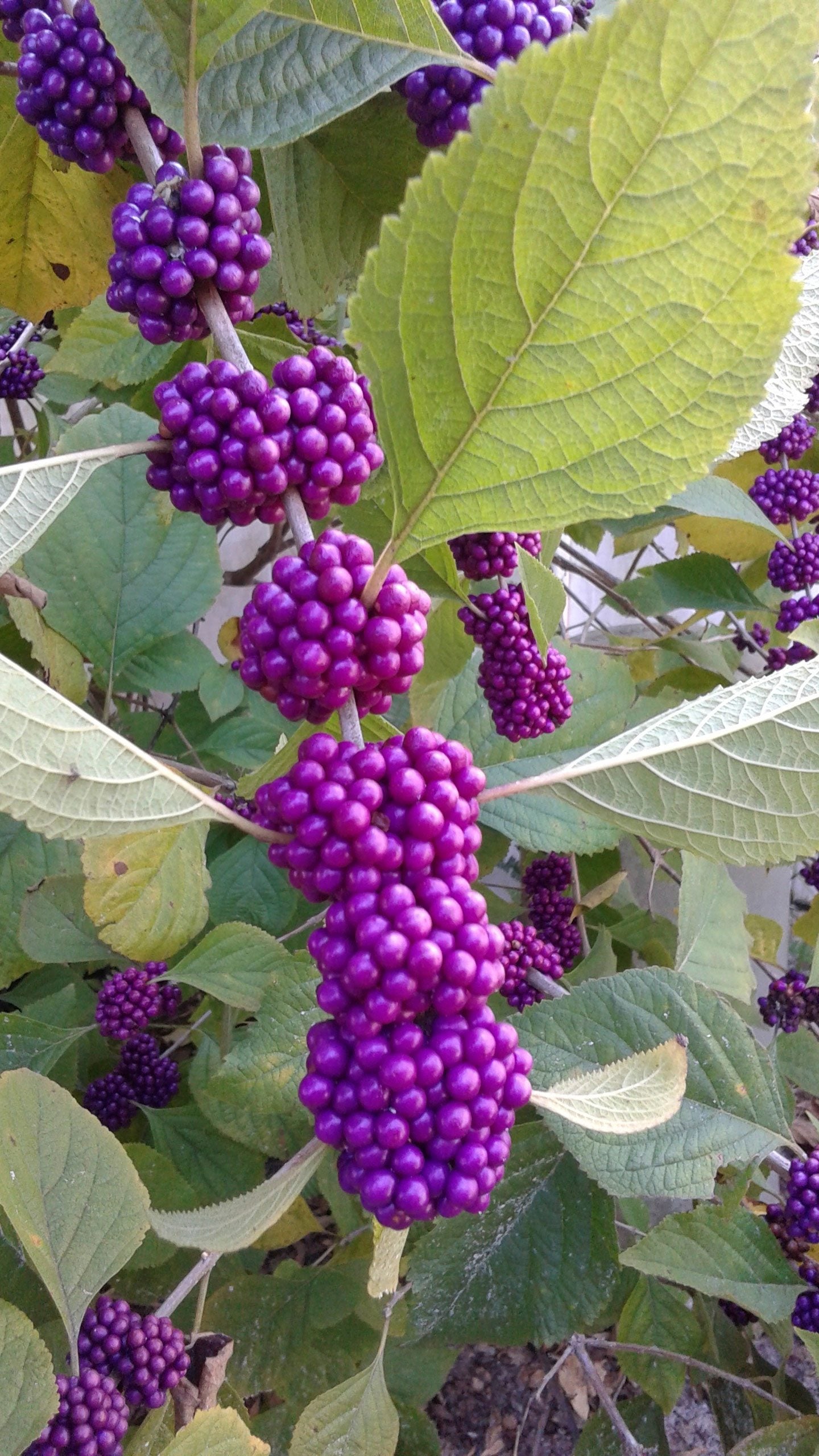Care Of Beautyberry: How To Grow American Beautyberry Shrubs
Grow the gorgeous beautyberry for its foliage and stunning purple berries. It works well in borders and anywhere you want a pop of beautiful color.


Beautyberry Shrub Info - Tips For Growing American Beautyberries
American beautyberry shrubs (Callicarpa americana, USDA zones 7 through 11) bloom in late summer, and although the flowers aren't much to look at, the jewel-like, purple or white berries are dazzling.
Beautyberry's fall foliage is an attractive yellow or chartreuse color. These 3 to 8 foot (91 cm.- 2+ m.) shrubs work well in borders, and you'll also enjoy growing American beautyberries as specimen plants. The berries last several weeks after the leaves drop - if the birds don't eat them all.
Beautyberry Shrub Info
Beautyberries live up to their common name, which comes from the botanical name Callicarpa, meaning beautiful fruit.
Also called the American mulberry, beautyberries are Native American shrubs that grow wild in woodland areas in Southeastern states. Other types of beautyberries include the Asian species: Japanese beautyberry (C. japonica), Chinese purple beautyberry (C. dichotoma), and another Chinese species, C. bodinieri, which is cold hardy to USDA zone 5.
Beautyberry shrubs reseed themselves readily, and the Asian species are considered invasive in some areas. You can easily grow these shrubs from seeds. Collect the seeds from very ripe berries and grow them in individual containers. Keep them protected for the first year, and plant them outdoors the following winter.
Care of Beautyberry
Plant American beautyberries in a location with light shade and well-drained soil. If the soil is very poor, mix some compost with the fill dirt when you backfill the hole. Otherwise, wait until the following spring to feed the plant for the first time.
Young beautyberry shrubs need about an inch (2.5 cm.) of rain per week. Give them a slow, deep watering when rainfall isn't enough. They are drought-tolerant once established.
Gardening tips, videos, info and more delivered right to your inbox!
Sign up for the Gardening Know How newsletter today and receive a free copy of our e-book "How to Grow Delicious Tomatoes".
Beautyberries don't need a lot of fertilizer, but will benefit from a shovelful or two of compost in spring.
How to Prune a Beautyberry
It's best to prune American beautyberry shrubs in late winter or very early spring. There are two methods of pruning. The simplest is to cut the entire shrub back to 6 inches (15 cm.) above the ground. It grows back with a neat, rounded shape. This method keeps the shrub small and compact. Beautyberry doesn't need pruning every year if you use this system.
If you are concerned about a gap in the garden while the shrub regrows, prune it gradually. Each year, remove one-quarter to one-third of the oldest branches close to the ground. Using this method, the shrub grows up to 8 feet (2+ m.) tall, and you will completely renew the plant every three to four years. Shearing off the plant at the desired height leads to an unattractive growth habit.

Jackie Carroll has written over 500 articles for Gardening Know How on a wide range of topics.
-
 Looking For Plants To Give You The Soft And Fuzzies? Try These 5 Fuzzy Leaf Plant Options
Looking For Plants To Give You The Soft And Fuzzies? Try These 5 Fuzzy Leaf Plant OptionsLovers of texture, drama, silver foliage and tactile plants will adore these special sensory garden additions. These fuzzy leaf plant options will leave you all aglow
By Susan Albert
-
 Get Ready For A Summer Of Hummers! Grow These Full Sun Hummingbird Plants and Flowers
Get Ready For A Summer Of Hummers! Grow These Full Sun Hummingbird Plants and FlowersIf you’re lucky enough to enjoy a sunny backyard, make sure you are maxing out on your pollinator opportunities and grow these full sun hummingbird plants and flowers
By Tonya Barnett